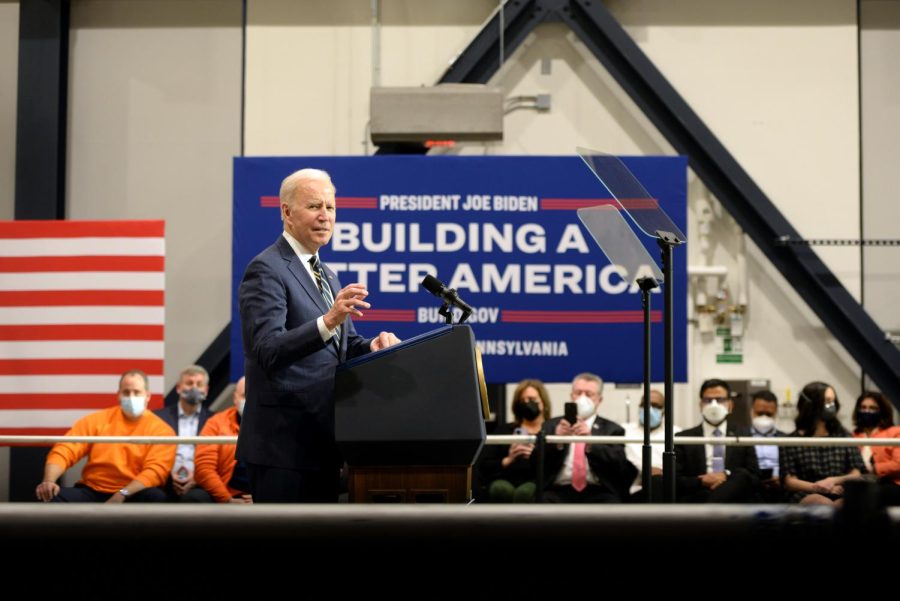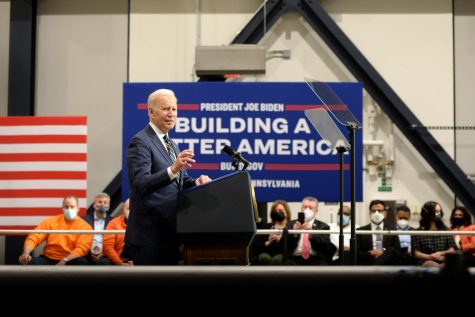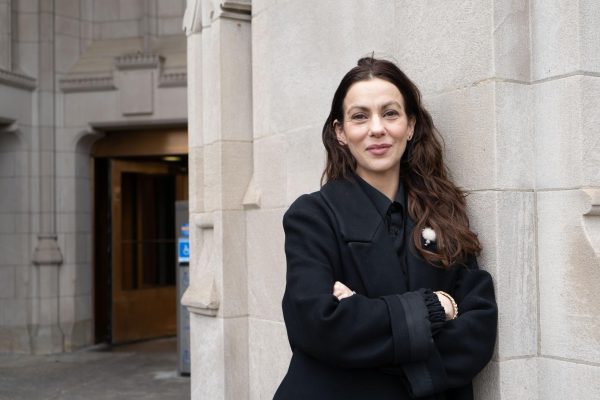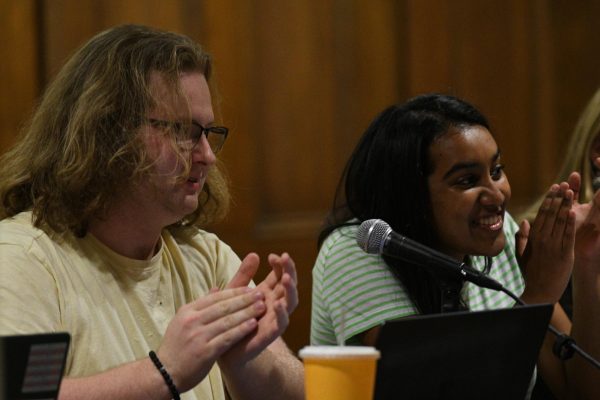A timeline of Pitt’s bomb threats
April 22, 2012
Feb. 13: The first bomb threat is received for Chevron Science Center.
March 14: A bomb… Feb. 13: The first bomb threat is received for Chevron Science Center.
March 14: A bomb threat received for the Cathedral of Learning.
March 19: A bomb threat received for the Cathedral of Learning.
March 22: A bomb threat received for the Cathedral of Learning.
March 23: A Pitt spokesperson confirmed that the police identified a “person of interest” for the string of bomb threats.
March 28: Bomb threats received for Chevron Science Center and the Cathedral of Learning.
March 30: A bomb threat received for the Cathedral of Learning.
Later that day, Pitt posted a notice on the my.pitt.edu homepage notifying students of a $10,000 reward for anyone that had information that would lead to the arrest and conviction of the person responsible for the threats.
April 2: Bomb threats received for David Lawrence Hall and the Cathedral of Learning.
Pitt increased the reward to $50,000 for anyone who had information about the actor responsible for the threats.
April 3: Bomb threats received at Litchfield Towers, the Chevron Science Building and the Cathedral of Learning.
April 4: Bomb threats received at Thackeray Hall, Posvar Hall, the Cathedral of Learning, Litchfield Tower C, Victoria Hall, Frick Fine Arts and the Music Building.
April 5: Bomb threats received at the Cathedral of Learning, Chevron Science Center, Frick Fine Arts, Posvar Hall and Litchfield Towers.
April 6: Bomb threats received at the Cathedral of Learning, Lothrop Hall, Holland Hall, Forbes Hall and Sutherland Hall.
David J. Hickton, United States attorney for the Western District of Pennsylvania, issued a statement regarding the bomb threats at Pitt. In the statement he said the Joint Terrorism Task Force, which includes the Pitt police as a contributing member, is working to find the source of the threats.
April 7: Bomb threats received at Frick Fine Arts, the Music Building, Litchfield Towers, Holland Hall, Sutherland Hall, the Cathedral of Learning and Forbes Hall.
Pitt spokesperson Robert Hill also received a bomb threat for a building which he would not specify. He didn’t see the threat message until 24 hours later, so there was no evacuation.
April 8: Bomb threats received at Hillman Library, Sennott Square and Benedum Hall. Pitt announces that building access will be limited. Pitt ID must be shown at building entrances and security will be checked. Students living in dormitories can no longer sign in non-Pitt students.
April 9: Bomb threats received at Amos Hall, Bruce Hall, Brackenridge Hall, Panther Hall, the University Club, Frick Fine Arts, McCormick Hall, Posvar Hall, David Lawrence Hall, Heinz Chapel, Victoria Hall, and Panther Central.
Pitt hit a record number of bomb threats in one day at 17.
April 10: A bomb threat received at Chancellor Mark Nordenberg’s Shadyside residence.
Hickton issued another statement saying that authorities have made “significant progress in the investigation” of the bomb threats.
April 11: Bomb threats received for Ruskin Hall, Panther Hall, Oakwood Apartments, Centre Plaza apartments, Bouquet Gardens, the William Pitt Union and Litchfield Towers.
Pitt police, with the assistance of Allegheny County police, took Mark Lee Krangle, 65, of Croton-On-Hudson, N.Y., into custody and charged him with two counts of terroristic threats and one count of harassment by communication. Pitt couldn’t say whether the arrest was connected to the bomb threats.
April 12: Bomb threats received for Forbes Hall, Ruskin Hall, Lothrop Hall, Pennsylvania Hall, Bruce Hall, Hillman library, Frick Fine Arts, David Lawrence Hall, Posvar Hall, the William Pitt Union, the University Club, Panther Central and the Cathedral of Learning.
The FBI issued a subpoena on Thursday to transgender individual Seamus Johnston, 22, who was expelled from Pitt in January, and his partner Katherine Anne McCloskey, 56, in connection with the string of bomb threats on campus.
April 13: Bomb threats received for Sennott Square, Benedum Hall, Mervis Hall, Soldiers and Sailors Memorial Hall and Alumni Hall.
April 14: Bomb threats received for Litchfield Towers, Bruce Hall, Panther Hall, Pennsylvania Hall and Lothrop Hall. Pitt also received bomb threats for Bellefield Hall and the Cathedral of Learning, but no ENS alert was sent out.
April 16: Bomb threats received for the Barco Law building, Holland Hall and Lothrop Hall.
U.S. Senator Bob Casey issued a statement saying that he had written a letter to the U.S. attorney general and secretary of Homeland Security asking them to provide law enforcement help and noting that attaining resources — such as bomb-sniffing dogs — put a financial strain on the local Pittsburgh community.
April 17: Bomb threats received for Chevron Science Center and the William Pitt Union.
April 18: Bomb threats received for Hillman Library, Allen Hall, Craig Hall, Alumni Hall, the Barco Law building, Bellefield Hall, Holland Hall, Sennott Square, Amos Hall, Mervis Hall, Pennsylvania Hall and Thackeray Hall.
April 19: Bomb threats received for Alumni Hall, Litchfield Towers, Sutherland Hall, Bruce Hall, Lothrop Hall, Pennsylvania Hall, the Cathedral of Learning, Chevron Science Center, Barco Law building, Posvar Hall, Benedum Hall, the University Club and the William Pitt Union.
April 20: Bomb threats received for Litchfield Towers, Sutherland Hall, Bruce Hall, Lothrop Hall, Pennsylvania Hall, Holland Hall and Panther Hall.
The Pitt News received an anonymous email from people claiming to be responsible for a portion of the recent string of bomb threats on Pitt’s campus, accurately predicting a 24-hour gap in threats from 8 a.m. Friday to 8 a.m. Saturday. The email said, “This all began when you, Nordenberg, put out a $10,000 — then $50,000 — ‘reward’ (bounty) for some young kid who’d pranked the University.”
April 21: Bomb threats received for Litchfield Towers, Salk Hall, the Cathedral of Learning, Pennsylvania Hall, Ruskin Hall and Scaife Hall.
Pitt dropped the $50,000 reward. The Pitt News received a second anonymous email that said, “Our only demand has been met, our campaign is over with immediate effect.”
April 22: Provost and Senior Vice Chancellor Patricia Beeson outlined new final exam and evacuation procedures. If threats at dormitories and final exam buildings aren’t deemed imminent, the buildings will be searched but not evacuated. Final examinations are limited to five campus buildings.
Editors note: This article has been corrected to reflect changes to the number of bomb threats that occurred on April 9.







